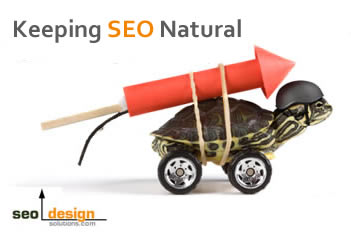Search engines have savvy algorithms programmed to parse millions of documents, links, apply weighting measurements to assess relevance, content popularity, trust and dozens of other holistic metrics in an instant.
As a result, they can determine which pages are characteristic of content in demand or documents with spikes in user engagement.
Just like a clique in high school, the popular websites and pages get more attention from the public at large. Consider search engines like a social barometer that determine just how hot a topic is based on the metrics of supply and demand.
Taken a step further, consider that if “community” and “exposure” are the scope of saturation and popularity, citation or “mentions, links, references” are a critical component to validate demand.
Information retrieval experts who program the algorithms know that by serving up quality content to satiates the masses solidifies the market position and utility of search engine’s like by-product of form, habit and function.
This dependency makes search engines a critical hub for seekers (who use them) when the need arises to quickly locate a useful website, product or service.
Each keyword rises and falls within the index at its own unique rate. The importance of SEO, meaning diversifying anchor text, link styles (internal, external, permanent, transient, topical, deep, etc.) and SEO link diversity depends on the sustainability of the objective.
Optimizing competitive keywords is a ruthless endeavor, however, of all the off page SEO techniques, varying link and anchor text diversity in addition to deep links (linking to a specific page with a specific consistency of keywords) is the most effective combination for achieving enhanced search engine visibility.
For example, using article marketing (to provide deep links to posts or subordinate content pages) to lock down rankings during the lull is a common, yet effective strategy. To define the algorithmic ranking cycle, just envision search engine popularity like a sine wave.
When a page is first created it has a spike in link flow (like the collective sum of content tries to bubble up through the new post) and cement its place in the hierarchy.
Then after a few weeks, new pages enter the index and start vying for that ranking position (and the page can dip below the relevance threshold) as the index either makes room (by pushing someone out of the way) and giving the spot to the new entry.
If the original site pushes back with its inherent authority (as a result of buoyancy), it will be easier to add a few links, additional content on the topic (to increase global term weights within the site) as well as lock in a top ranking or an ascending trajectory for that keyword.
This is the time where you can determine based on the hang time a new pages gets, just how difficult it will be to lock it in later.
Managing buoyancy is the basis of SEO rankings, the less complex you make it and the more you nurture each page, sub folder or semantic segment, the less time is required to break lose from a ranking plateau.
The ranking plateau implies a page stuck in the 40’s, 50’s or beyond for a specific keyword. By adding layers of optimization, you can break the ranking lose and get it to rise if you appease the on page and off page factors.
Vacillation is natural for rankings, but it is better to have more horsepower percolating under the hood (in the sites collective relevance blueprint and link profile) to exceed the thresholds opposing it from rising to the top.
Finding and exceeding that tipping point depends on a variety of factors; however, it is the fundamental aspects such as (a) the age of the site (b) the volume of content on the RANKING topic (c) the trust, type and consistency of the off page factors pointing at that page and how (optimal) the off page factors are for sculpting the degree of popularity and importance the page has for the selected topic.
Without giving away too much, the value of link diversity, anchor text diversity and management of the discovery cycle for adding relevant content and links is what differentiates amateur SEO’s from genuine SEO Professionals.
Aspects of tactful administration, superb timing and understanding the relevance time-table for content and link development determine what reaction your optimization efforts yield in search engines.
In closing, the tip is (a) to use more than one keyword in anchor text to deep link to a page (b) add links over time (c) make sure you are consistent with the on page content meta title and description as well as (d) align off page links with internal links that also reference the page in question.












Aw, this was a really nice post. Taking a few minutes and actual effort
to create a superb article… but what can I say… I hesitate a whole
lot and never manage to get anything done.